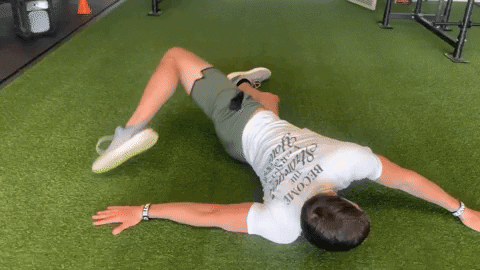Masters of their trade
From street level, staring at a cluster of signs and down a long hallway, there's no way to know you're standing in the vestibule of a coffee cathedral.
a word about talent
When someone shows up with little to no training and knocks out an impressive time trail, we say They’re talented. When someone looks smooth and effortless, covering ground like a gazelle? Talented.
And there is something to that: clearly their build, their stride, their energy systems are naturally oriented toward covering ground on foot with speed. But here are other forms of talent:
athleticism < think agility and explosiveness
change-of-gear
physiological response to stimuli
ability to recover from training
physical durability
impulse control / discipline
emotional regulation
mental focus
racing instincts
competitiveness
appetite for work < desire
ability to endure pain / toughness, acute < desire
ability to endure discomfort / toughness, long-term < desire
coachability
Many of these are learned before you encounter the athlete, most can be trained to some extent, all are things that an athlete can show up with an abundance of on Day One. None should be discounted or ignored.
Likewise, an ungainly runner is almost certain to become more fluid, more efficient — that is to say, possessing more of what the running community typically calls “talent” — with lots and lots of quality, intentional work. Meanwhile, that gazelle-like “natural” will find their greatest opportunities in areas that are most difficult to develop — mental fortitude, competitiveness, desire — and some that may be genetic and altogether fixed (speed of recovery, training response),
The slow-footed freshman who loves to eat miles (desire) and never seems to be the worse for wear (durability, recovery)? Typically that kid’s lack of speed has him lumped-in with the lower training groups who are running less volume than top athletes. So when he runs a half-marathon in the off-season and loves it, have your antennae up: eating miles could be his meal-ticket, while working on areas of weakness. Heck, offer those “JV types” the challenge of a half-marathon for anyone who wants to try, and see who perks and throws himself into it.
All this to say: almost every athlete will bring some sort of talent to the table. To identify that gift or gifts is a necessary first step in the path toward their highest capability.
MY COACHING PHILOSOPHY
“Help each athlete learn to find joy in meeting challenges, large and small.”
Personal development is the best and highest result of youth sports, and I view my role as coloring the “how” of that process: growth can occur via tragedy, trauma, and misery, and while I want my athletes to become resilient and well-equipped adults, I believe the coach’s highest calling is to pursue such traits with an equal interest in those adults also being “well-adjusted” and “happy.”
Being process- and values-oriented on a daily — and, ideally, minute-to-minute — basis is the foundational strategy for pursuing those objectives and I try to bring to life four ideals within our program: personal growth, mindfulness, kinship, and, bravery.
In practice, I find myself doing my best coaching when I am leading with vulnerability: being genuine and sincere, open to honest feedback, and willing to admit mistakes — even to the young people under my guidance. Not only does that approach engender a deep trust, but it also engages all four of those core values on some level.
Alongside vulnerability, I believe the best coaching occurs through creativity and curiosity. If I’m not taking time to test assumptions and look for better ways of doing or being, then I’m not leading to my fullest.
At a tactical level, my goal for each athlete is continuous, sustainable improvement. When planning training or supervising a workout, my guiding principle is, When in doubt, do less. “The best ability is availability” may be a cliche but there is abiding truth in it. Moreover, nothing saps the enjoyment from one’s sport more reliably than repeated injury or the feeling that progress is no longer being made. Long-term improvement should also mean an athlete becomes less and less reliant on the coach, over time, as he or she gains understanding of training methodologies, tactics in competition, and his or her own needs and limits.
As for measuring performance, I think often of a conversation with a parent I had very soon after starting at my current school: “I don’t think my job is to win, but rather to produce excellence.” That means athletes being well-prepared and competing at the peak of their potential, whatever that might look like — and still being excellent people in those instances when they might not.
Those highs and lows are part and parcel of sports: as a coach, our overriding impact is one of tone and tenor. After all, create an environment where young people feel seen, valued, challenged and cared-for, and good things will happen in the box score.
things that seem to be true and goals THAT FEEL worth pursuing
Help each athlete learn to find joy in meeting challenges, large and small.
Growth can occur via tragedy, trauma, and misery — the coach’s highest calling is to have equal interest in producing adults who are as well-adjusted and happy, as they are well-equipped and resilient.
Be process- and values-oriented on a daily — and, ideally, minute-to-minute — basis.
Connect regularly with your core values: personal growth, mindfulness, kinship, and bravery.
Lead with vulnerability: act sincerely, welcome honest feedback, admit mistakes.
Engage your curiosity and creativity. Test assumptions and look for better ways of doing or being.
Pursue continuous, sustainable improvement. When in doubt, do less.
Success means athletes needing you less and less.
Aim for excellence and let the results take care of themselves.
Remember: the want of the child is to be loved.
Create an environment where people feel seen, valued, challenged and cared-for, and good outcomes will follow.



